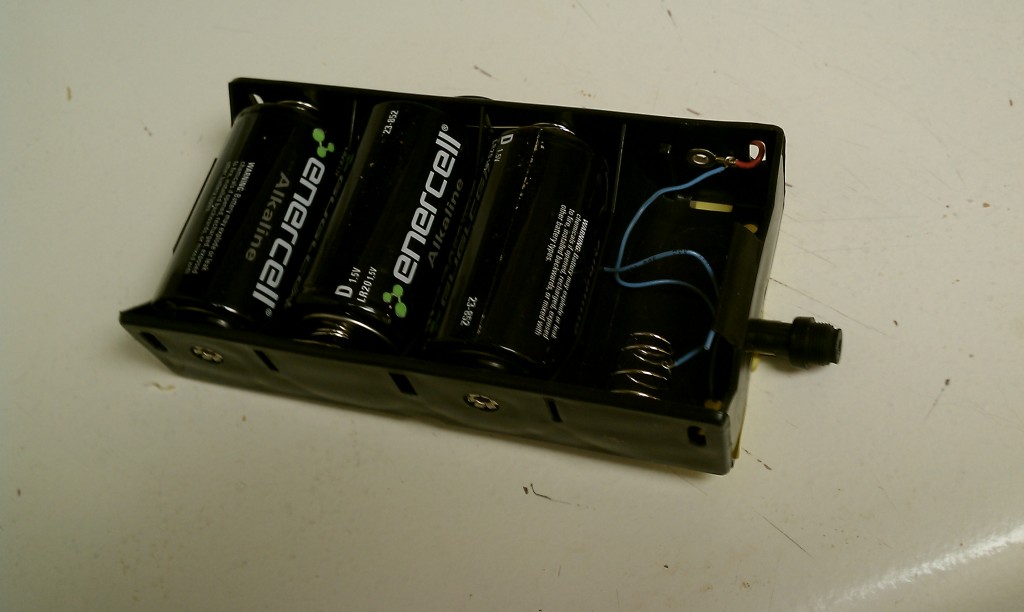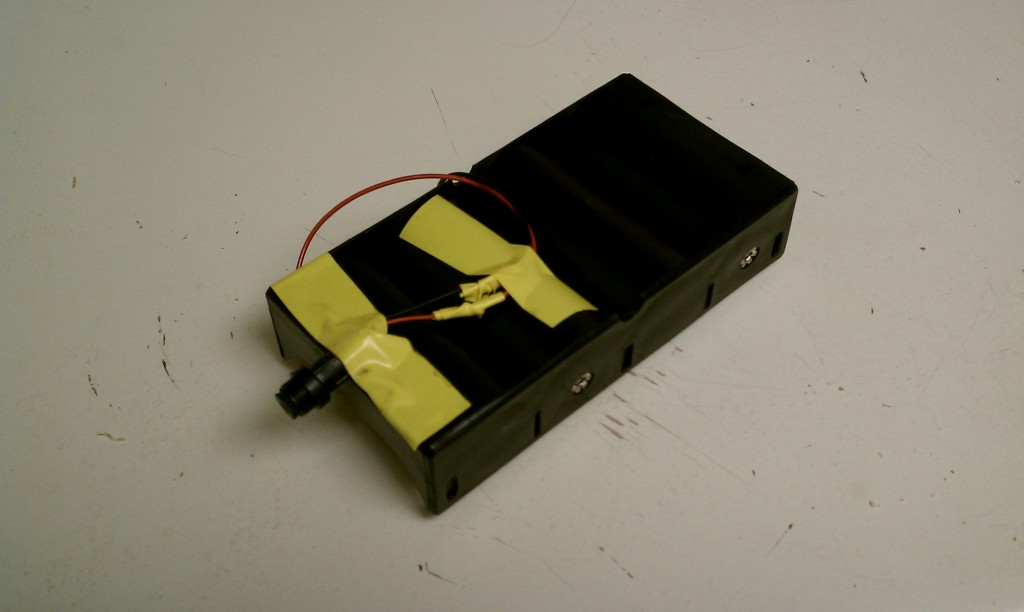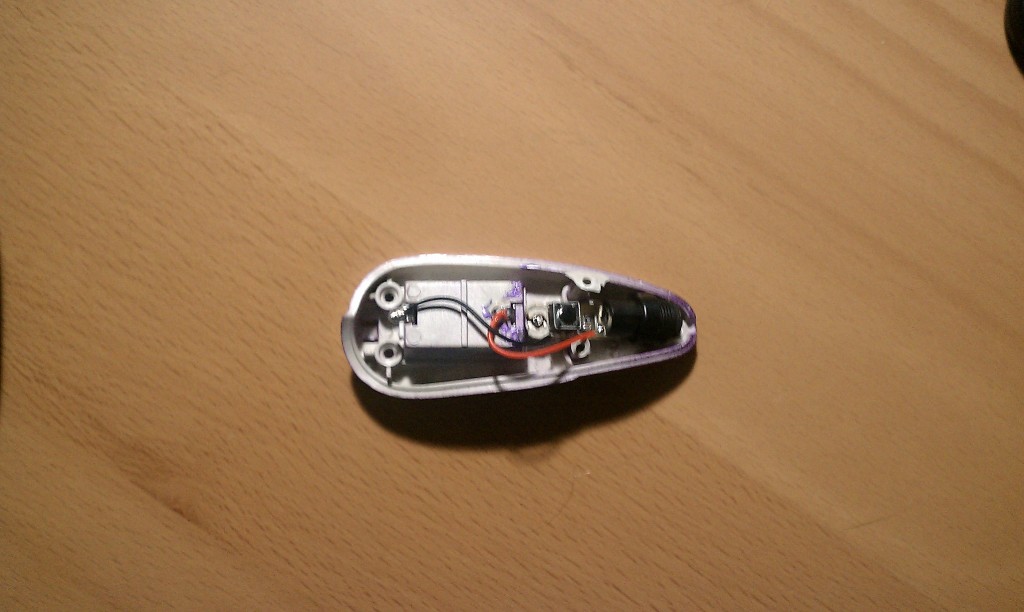I fixed the short battery life of my laser pointer:

$10 worth of watch batteries lasted a week with my other laser pointer. Time to find out how many years $6 of D batteries last. I actually wanted Cs, but the radio shack I went to didn’t have that size battery holder, just AA and smaller and D. I probably should have gone for AA for the sake of compactness, but oh well.
The hardest part was soldering the wires together, especially since I hadn’t used a soldering iron in years. I don’t think I did a great job of it, but it’s not easy to solder wires together, especially when you’re holding them. Wires are, by definition, a good conductor and they were getting quite warm two inches from the join. De-soldering the laser wires from the original holder melted both the insulation on the wires and the plastic that the battery contacts were mounted in before the solder, but they eventually came off.
Talore was very interested in what I was doing (probably because it wasn’t playing with her), so I ended up doing the soldering/desoldering in the bathroom with the door shut so she wouldn’t sniff at it and burn herself.
Had a rather annoying day at work today. I thought I was finished with my task last night, but there were questions this morning. I answered those, resubmitted the data, and finally moved on to other things, then I got a call pointing out an inconsistency with the data from yesterday. All I changed (as far as I can tell) was that I added an exporter to get csv files out, but until I figure out why it changed by 10% neither data/chart set can be trusted. It takes 20 minutes to test to see if a change helped, so I spent 2 hours after I planned to leave mostly waiting. Didn’t figure it out, but hopefully it’s not urgent enough for them to ask me to go work on it over the weekend.
I’ve improved my average Rubik’s cube solve time by a few seconds (best 3 of 5 is now ~55s, averaging about a minute overall), but I’m barely maintaining my spot on the board. Actually, I might have gotten passed, I know Tom beat my single solve time, but I didn’t check to see if his 3 of 5 changed. We also added a column for 1-handed. My best is just under 3 minutes. I need to work on that, but the speed solve is quicker and easier.
My 4x4x4 cube is solved completely for the first time in years. The only problem is that I still can’t remember how to fix parity errors (or at least not when a single edge is reversed), so I was mixing it up and resolving till I got lucky. The first time I got that parity error I came up with a fix in seconds, but I haven’t been able to figure it out again since. I need to work on the 5x5x5 too, just missing one step (that I think I’ve figured out before).
Edit: Completely forgot to mention the laser dot substitute I created last night. I tied a piece of the heavy duty thread used on my sofa/chain cushions onto the feathery toy. After Talore jerked the thread out of my hand a few times I tied the other end onto a clothes pin. I can clip the clothes pin onto my belt when I’m moving around so the feathery thing follows me, and Talore will stalk it mercilessly.


